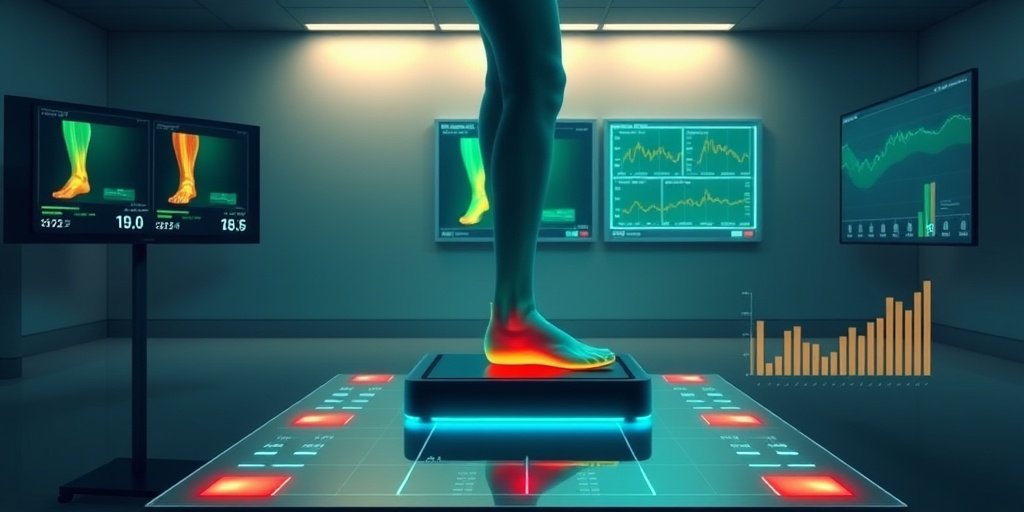⚡ Quick Summary
This study evaluated the cross-system reliability of various plantar pressure measurement devices, revealing significant discrepancies in key parameters such as peak pressure and contact area. The findings underscore the need for standardized protocols to enhance data comparability in biomechanics and clinical applications.
🔍 Key Details
- 📊 Participants: 15 healthy adults
- 👣 Footprints collected: 360 from platform devices (barefoot) and 1200 from in-shoe devices (shod)
- ⚙️ Systems tested: Three platform-based and two in-shoe systems
- 📈 Key parameters analyzed: Contact area, maximum force, peak pressure, and more
- 🔬 Statistical analysis: Two-way repeated-measures ANOVA
🔑 Key Takeaways
- 📊 Discrepancies in plantar pressure measurements can limit data comparability.
- 💡 Mean values and coefficients of variation often differed among devices.
- 📉 Intraclass correlation coefficients for peak pressure ranged from poor (<0.5) to moderate (0.5-0.75).
- 🌐 Standardization of calibration and data extraction protocols is crucial.
- 👟 Environmental factors like footwear selection contribute to measurement inconsistencies.
- 🤖 Emerging technologies integrating AI with wearable sensors could enhance clinical decision-making.
- 📜 Establishing uniform reporting standards is essential for future research and applications.

📚 Background
Plantar pressure measurement systems are vital tools in assessing foot function and gait. However, the variability in sensor design, measurement protocols, and population characteristics can lead to inconsistencies in data interpretation. Understanding these discrepancies is essential for improving clinical outcomes and advancing research in biomechanics.
🗒️ Study
The study involved 15 healthy adults who walked at a self-selected pace, allowing researchers to collect a comprehensive dataset of 360 footprints from platform devices and 1200 from in-shoe devices. The analysis focused on various parameters, including contact area and peak pressure, across different regions of the foot (hindfoot, midfoot, and forefoot).
📈 Results
The analysis revealed that mean values and coefficients of variation frequently differed among the devices tested. The intraclass correlation coefficients for peak pressure indicated substantial variability, with many devices showing poor reliability. These findings highlight the challenges in achieving consistent measurements across different systems.
🌍 Impact and Implications
The discrepancies identified in this study have significant implications for both clinical practice and research. As emerging technologies integrate high-resolution sensors with artificial intelligence, establishing standardized protocols will be crucial for ensuring robust and comparable data. This will ultimately enhance the effectiveness of personalized interventions and predictive modeling in healthcare.
🔮 Conclusion
This study emphasizes the critical need for standardization in plantar pressure measurement systems to improve data comparability and reliability. As we move towards integrating advanced technologies in clinical settings, addressing these discrepancies will be vital for enhancing patient care and advancing biomechanical research. Continued exploration in this field is encouraged to unlock the full potential of these technologies.
💬 Your comments
What are your thoughts on the importance of standardization in plantar pressure measurement? We would love to hear your insights! 💬 Leave your comments below or connect with us on social media:
Discrepancies between plantar pressure devices: Evaluating cross-system reliability for biomechanics, clinical use and predictive modelling.
Abstract
Plantar pressure measurement systems are widely used to assess foot function and gait, yet discrepancies in sensor design, measurement protocols, and population characteristics can undermine data comparability. This study investigated three platform‑based and two in‑shoe systems to evaluate key parameters such as the contact area, maximum force, force‑time integral, peak pressure, pressure‑time integral, maximum mean pressure and contact time. Fifteen healthy adults walked at a self‑selected pace, providing a total of 360 footprints from the platforms (barefoot) and 1200 footprints from the in‑shoe devices (shod). Each footprint was then divided into hindfoot, midfoot, and forefoot regions. A two‑way repeated‑measures ANOVA (systems × regions) revealed that mean values (MV) and coefficients of variation (CV) frequently differed among devices, indicating limited cross‑system comparability. Moreover, intraclass correlation coefficients for peak pressure ranged between poor (<0.5) and, on rare occasions, moderate (0.5-0.75), further confirming substantial variability. These discrepancies highlight the importance of standardising calibration, data extraction, and analysis protocols, as even devices based on similar resistive or capacitive technologies can produce dissimilar outcomes. Environmental factors such as footwear selection and lab‑based "targeting" errors also contribute to inconsistencies. These challenges are especially relevant as emerging technologies integrate high-resolution wearable sensors with artificial intelligence to support real-time clinical decision-making, disease prediction and personalised interventions. Establishing uniform reporting and validation standards will be essential to ensure robustness and comparability in both traditional biomechanical studies and future AI-driven applications.
Author: [‘Chockalingam N’, ‘Giacomozzi C’, ‘Healy A’, ‘Sacco ICN’]
Journal: Foot (Edinb)
Citation: Chockalingam N, et al. Discrepancies between plantar pressure devices: Evaluating cross-system reliability for biomechanics, clinical use and predictive modelling. Discrepancies between plantar pressure devices: Evaluating cross-system reliability for biomechanics, clinical use and predictive modelling. 2025; 64:102190. doi: 10.1016/j.foot.2025.102190